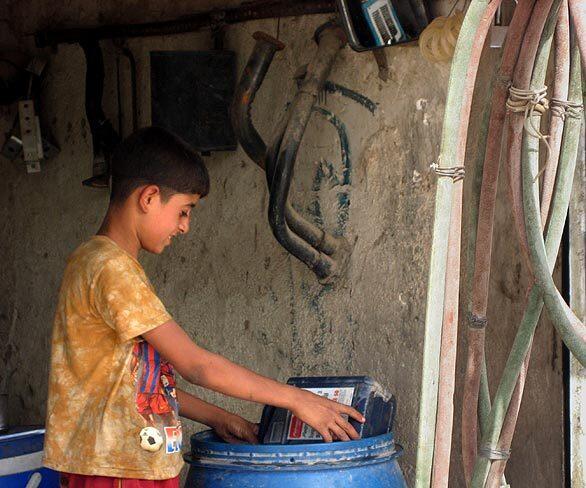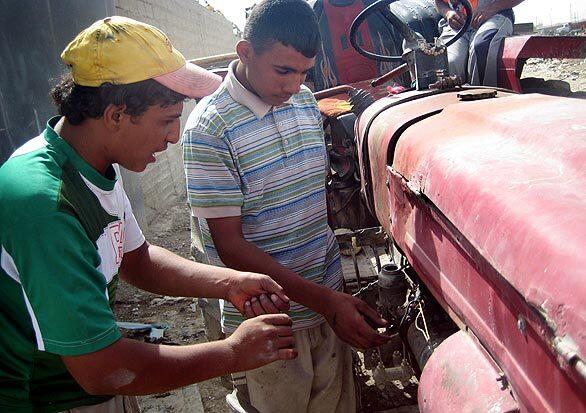
Ali Kadhim Baidani, right, tries to fix his tractor with the help of an unidentified friend. With his father unable to work, Ali uses the tractor to collect garbage for a local contractor, starting at 5 a.m. each morning until 2 in the afternoon. “The happiest moment for me, he said, is when I receive money from the contractor and give it to my father to spend on my family.” (Raheem Salman / Los Angeles Times)
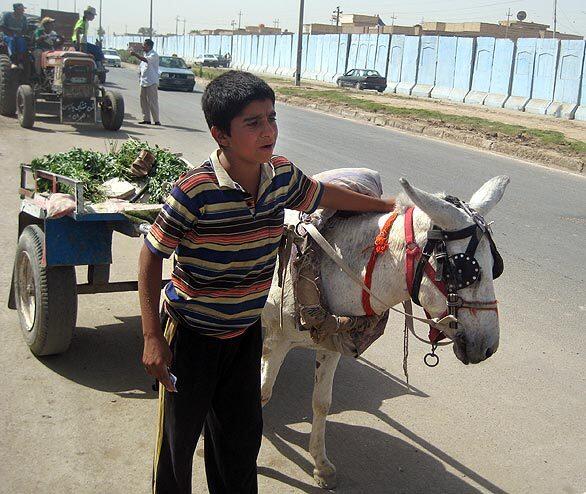
Sajjad Hassan Saadi, 12, quit school in the 4th grade to earn a living selling government rationed flour diverted to the black market. It’s illegal but unremarked upon in Iraq. He can earn $8 to $12 a day, but on a recent afternoon, he had no money in his pockets. He fears he has no future unlike other children who go to school. (Raheem Salman / Los Angeles Times)
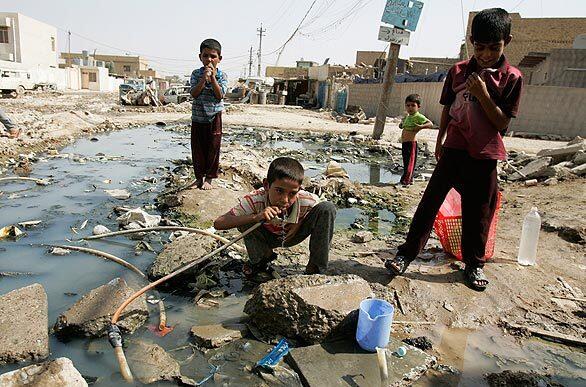
An Iraqi boy drinks from a broken pipe in Sadr City. A United Nations report found that 94% of boys in Iraq attend elementary school, but that number drops to 44% by high school. For girls, 81% start elementary school; 31% go on to attend high school. (Karim Kadim / Associated Press)
Advertisement
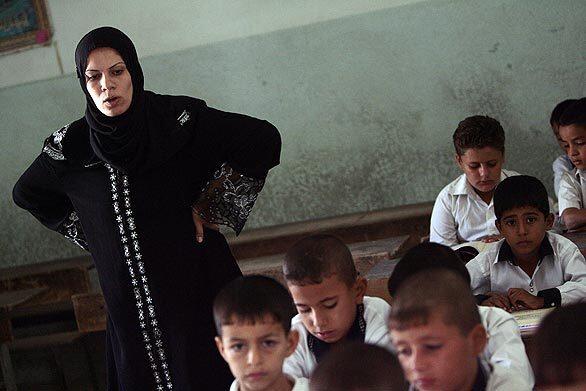
An teacher leads a class on the first day of school at Al Rasafi elementary in Sadr City after the end of the Islamic holy month of
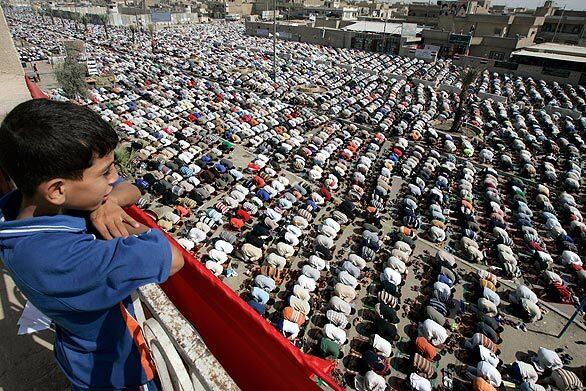
A young boy watches worshipers during Friday prayers in Sadr City. Children in the poor walled-in Shiite Muslim neighborhood have been shaped by war and poverty. They are witnesses to sectarian violence, Shiite militias, angry sermons and troops patrolling. (Karim Kadim / Associated Press)
